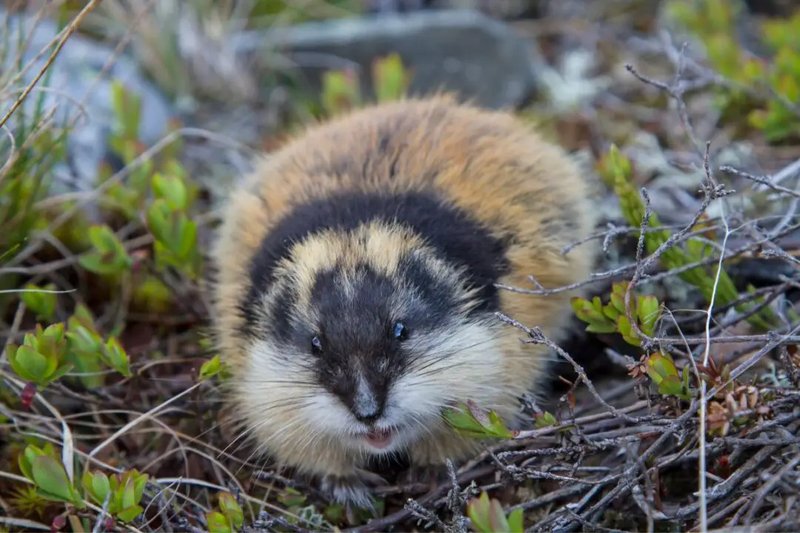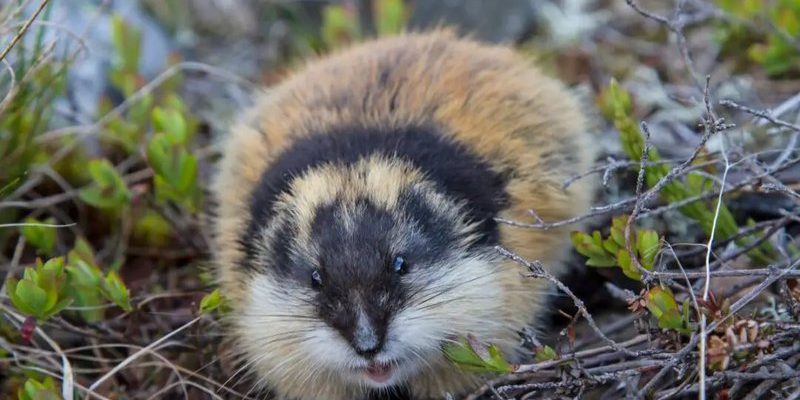
So, let’s embark on a journey to explore ten animals that resemble lemmings and uncover how you can tell them apart. You might be surprised by what you learn about these often-overlooked creatures. When you’re out hiking or simply curious about wildlife, knowing these little details can make your adventures even richer.
1. Voles: The Lemming Lookalike
Voles are perhaps the most similar animals to lemmings. They belong to the same family, Cricetidae, which covers many species of small rodents. Voles are usually found in grasslands, meadows, and forests, and have a similar stout body shape. What sets them apart is their longer tails. While lemmings tend to have very short tails, voles sport tails that can be as long as the rest of their body!
You might be wondering how to spot a vole in the wild. Look for their burrows; voles dig extensive tunnel systems underground. Their cheeks are often stuffed with food, which gives them a characteristic bulge. If you see a little critter darting quickly between grasses, it could very well be a vole on a munching spree!
2. Muskrats: Swimmers of the Wetlands
Muskrats are another member of the rodent family, much larger than lemmings. These creatures thrive in wetland areas like marshes and lakes. They have a long, flattened tail that helps them swim effectively. Unlike lemmings, which are primarily terrestrial, muskrats are excellent swimmers and spend a lot of their time in the water.
If you’re near a pond or river, keep an eye out for their distinctive houses, made of reeds and mud. It’s like their little waterfront condos! These animals are often seen diving under the water, making them less recognizable than their land-loving relatives.
3. Ground Squirrels: The Social Butterflies
Ground squirrels are another interesting comparison. While much larger than lemmings, their social behavior is quite similar, as both enjoy living in groups. Ground squirrels have longer ears and bushier tails, making them easy to identify. You’ll often see them sunbathing together, which is a fun behavior to watch.
They typically inhabit grasslands and open areas, often creating extensive burrow systems. If you spot one popping its head out of a hole, it might be announcing to its friends that it’s time to socialize or keep an eye out for predators!
4. Hamsters: The Friendly Furries
Hamsters are beloved pets, but they share a resemblance with lemmings in terms of their shape and size. However, they are much fluffier and come in various colors. Hamsters have cheek pouches for storing food, which is one of their cutest features.
What makes them different from lemmings is their nocturnal nature. If you have a pet hamster, you’ve probably noticed they’re more active at night, unlike lemmings that roam about during the day. So, if you’re looking for a lively little animal that resembles a lemming, a hamster might be your best bet—just keep it in a cage!
5. Gerbils: The Desert Dwellers
Gerbils, like hamsters, are popular pets and have a similar body shape to lemmings. These small rodents are from arid regions, making them quite different in habitat. They have long tails and are known for their burrowing behavior, creating tunnels in the sand and dirt.
One key difference is their social nature. Gerbils are highly social, often living in pairs or groups. If you ever observe them together, you’ll see how they interact, often grooming and playing with each other. It’s a great reminder of how different environments can shape animal behavior, even among similar species.
6. Shrews: The Tiny Insectivores
Shrews are not rodents but insectivores, making them different from lemmings. They have a pointy snout and are known for their quick movements. Shrews are smaller than lemmings but have a similar stocky body shape.
What sets them apart is their diet. While lemmings are herbivores, munching on grasses and roots, shrews feast on insects, worms, and other tiny critters. If you see a fast-moving creature rustling through the underbrush, there’s a good chance it’s a shrew looking for lunch!
7. Pikas: The Alpine Cuties
Pikas are tiny, mountain-dwelling mammals that have a resemblance to lemmings, particularly in size and shape. These adorable creatures are known for their rounded ears and short limbs. However, pikas live in rocky alpine areas, preferring colder climates compared to their lemming cousins.
One fascinating behavior of pikas is their tendency to gather food in the summer to store for winter. If you’re hiking in mountainous regions, listen for their high-pitched calls. Spotting a pika in its rocky home is a treat, and their quirky habits make them a charming find.
8. Mice: The Ubiquitous Rodents
Mice are perhaps the most common rodents found worldwide. They share a somewhat similar size and shape to lemmings, making it easy to confuse the two at a glance. Mice come in various colors and patterns, which can help differentiate them from the solid-colored lemmings.
You might notice that mice have longer tails in proportion to their bodies compared to lemmings. Plus, mice tend to be much more adaptable, living in a wide range of habitats, from forests to urban areas. When you’re in a park or garden, keep an eye out for these little critters scurrying about!
9. Capybaras: The Gentle Giants
Capybaras are a surprising entry on this list due to their size. They’re the largest rodents in the world! While they don’t look much like lemmings, both are members of the rodent family. Capybaras have a more elongated body and can weigh up to 150 pounds, whereas lemmings are tiny and weigh only a few ounces.
What’s fascinating about capybaras is their social nature—they often live in groups near water. When you see a group lounging by a river, you’ll know you’re looking at the gentle giants of the rodent world. It’s a good reminder that even in the animal kingdom, diversity is key!
10. Prairie Dogs: The Communal Rodents
Finally, let’s talk about prairie dogs. These animals are larger than lemmings and have a very social structure, living in colonies. They have a similar body shape but are distinguished by their longer legs and bushy tails.
You’ll often hear prairie dogs making various sounds to communicate with each other. They are known for their complex burrow systems, which they dig in grassy plains. If you find yourself in the American West, watching a colony of prairie dogs can be endlessly entertaining.
In summary, while lemmings have their own unique charm, a variety of animals share similarities with them. From voles and muskrats to pikas and prairie dogs, recognizing these differences helps us appreciate the diverse lives of small mammals. So next time you’re out exploring nature, keep an eye out for these little wonders—you might just discover a whole new world of wildlife!

